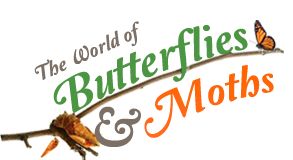Trade in Taxidermy Bats
The Trade in Taxidermy Bats
‘Right or wrong – who decides?’
This brief overview is designed to explain how tropical bats are harvested, and the laws behind protecting bat species. In Great Britain changes in agriculture practice since WW2 and habitat loss have led to a rapid decline of bat species. Consequently, laws have been passed to protect these vulnerable species.
The situation in oriental regions is far different because of the shear volume of colonies. Many species of tropical bat pose substantial problems for farmers, especially fruit farmers where bats can devastate crop production. Unlike in Britain where bat colonies are numerically small, in Asia bat colonies can number into the millions. Therefore, how bats are managed internationally is decided by species, location, commercial impact, and cultural norms.
Since prehistoric times Asian cultures have used bats for food, statistics suggest 30-40% of all fruit bats are captured for food, while about 8-12% of insectivore eating bats are captured for food (graphic example). Where excessive populations require pest control, culling is carried out at the discretion of Government authorities. A flip side to ‘culling’ is that a very small percentage are retrieved for taxidermy which in turn provides an income for often financially poor indigenous peoples. The process of ‘bat collecting’ is Government monitored and taxidermy bats must meet standards of hygiene and disease control before export permits are granted. Declaration of ‘non-infectious’ methodology involves extreme heat treatment for 280 hours to kills all pathogens (zoonotic diseases). Skulls and skeletons subjected to the same heat treatment with an additional deep soaking in hydrogen peroxide.
Questions of ethics have been raised by those rightly concerned for the welfare of wild bats and international disease control. Firstly, no CITES protected bats are sold by WOBAM. All the species offered on this website have been legitimately obtained through ‘pest control’ and would otherwise be destroyed or used in culinary dishes. Secondly all our imported bats are issued with Government stamped disease control certificates (non-infectious declaration).
Unfortunately, the internet is awash with misinformation concerning taxidermy bats. Inflammatory language is employed by those who oppose bat taxidermy to evoke a negative and critical response from the sympathetic and uninformed. Statements include ‘trade in bats is a major threat to species’ – ‘stop this frivolous activity’ – ‘ban trade in bats’ – exaggerations such as ‘over 500 bat sellers on Etsy and eBay’ or scaremongering over pathogen fears ‘bats carry disease’ – the list of misinformation is most disturbing. As explained above buying a legally obtained, taxidermy ‘bat’ is not a crime and persons who own one should not be demonised or made to feel guilty for enjoying the aesthetic beauty and art of taxidermy. Furthermore, bats sold on this website are classified as ‘least concern’:
A least-concern species is a species that has been categorised by the International Union for Conservation of Nature (IUCN) as not being a focus of wildlife conservation because the specific species is still plentiful in the wild. They do not qualify as threatened, near threatened, or (before 2001) conservation dependent. Furthermore the very small percentage of pest control bats that do experience rebirth as taxidermy specimens do not endanger or threaten wild populations; the demand is too low and the populations too high.
The only species of bat which we occasionally offer for sale which is currently classified by the IUCN as ‘near threatened’ is Kerivoula picta. However, this generalised description is somewhat misleading as Kerivoula picta might be very scarce in one country – such as India and Bangladesh – but relatively common in Indonesia where when troublesome still requires culling. We await more scientific research data and will of course work with findings and any changes to legal status.
In conclusion, as entomologists and suppliers of taxidermy products we are extremely conscience of the need to protect vulnerable species. Likewise, we are conscience of the right to buy and own preserved species that are NOT threatened or under any legal protection. Of course, the common response by critics is to employ emotive language such as this is ‘cruel’ or ‘immoral’ or ‘unethical’ or ‘its about the money’ – such labels are quite literally without warrant and emerge more from ignorance, personal sentimentality and polemical aims than actual hard evidence. It actually comes down to what the law says and personal choice.
In my forty years of working with wildlife my own experience is that most people have not been provided the full picture, hearing only ‘half truths’ couched in such a way as to present the image of a helpless animal ‘victim’ the result of wanton avarice. Psychological animal personification adds a further tier, personification a tried and tested way to evoke emotional response and a methodology Saint Paul labelled idolatry (cf. Romans 1:22-25).
Ironically few people examine their own hypocrisy being oblivious to the vast array of connections between ‘killed’ animals and everyday life; be that a KFC or McDonalds while reclining on a leather sofa or ingesting some new drug ‘tested on animals’. Sadly, taxidermy has become an easy target. A person should not feel intimidated or pressured by ‘woke’ social propaganda.
Ultimately, we live in a postmodern world where ‘ethics’ and ‘morals’ are subjective and relative. Therefore, unless the ‘law’ states otherwise the question of whether to ‘buy or not to buy’ a preserved bat is really a matter of personal conscience, a partly philosophical partly religious choice that should be based in logic, reason and ‘fact’ not based on our emotions or opinions that can so easily mislead and oftentimes have little or no basis in reality.
Jason Wright B.Th., M.A.T.S
F.O.B World of Butterflies & Moths 2024
